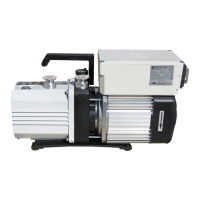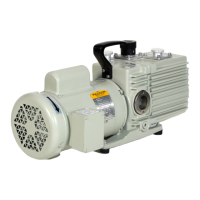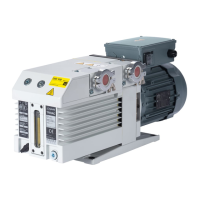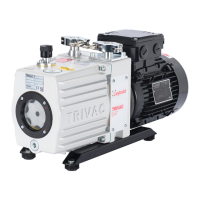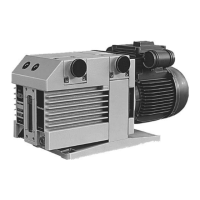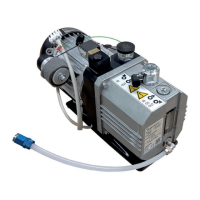CAUTION: EXHAUST PIPELINE BLOCKAGE
Risk of damage to the equipment. Note the specied cross sections for the
connection lines.
If exhaust gases must be collected or contained, do not allow the exhaust line to
become pressurised. The pressure in the oil box must not exceed 0.5 bar(g). An
exhaust line that is too small in diameter or which is blocked can r
esult in the
formation of overpressure within the pump. Possible consequences can be a
damaged or even burst open pump. Thus the exhaust line must be checked from
time to time to ensure that there are no obstructions.
Do not operate the pump with a sealed exhaust line. There is the danger of injury.
Note:
To avoid back owing condensate, install the exhaust line with a downward
slope (lower than the pump) to pr
event condensate from owing back into
the pump. If this is not possible, insert a condensate trap.
When oil mist is to be removed from the exhaust ow we recommend the
use of the exhaust lter with lubricant return which is part of the pump
system.
Before connecting the pump, remove the shipping seals from the
connection anges.
Retain the shipping seals in case you need to store the pump in the future.
The pump is shipped with intake and exhaust anges mounted for vertical
connection. You can easily convert the exhaust ange for horizontal
connection. Connect the intake and exhaust lines with a centering ring and a
clamping ring each. Use the centering ring with a dirt trap for the intake port.
Connect the intake and exhaust line using anti-vibration bellows, without
placing any strain on the pump.
The maximum intake pressure must not exceed atmospheric pressure
(1013 mbar).
The intake line must be clean. Deposits in the intake line may outgas and
adversely affect the vacuum. The connecting anges must be clean and
undamaged.
The maximum throughput of the pump is equivalent to the pumping speed
of the pump (refer to Technical data on page 16).
The cross-section of the intake line must be at least the same as that for the
intake port. If the intake line is too narrow, it reduces the pumping speed. If
the process gas contains dust, it is essential to install a dust lter in addition
to the dirt trap supplied.
The dust lter is recommended to be installed horizontally. This makes sure
that when you remove the lter, no particles fall into the intake port.
The pump may be operated with an inert gas ballast via a connection that is
provided for this purpose. The gas ballast valve body can be replaced by a
permanent or EM gas ballast valve with DN 16 KF connection. Matching
connectors are available (refer to Accessories on page 58).
Gas ballast inlet pressure must not be more than 1013 mbar (absolute), and
gas ow must be sufcient (about 1/10 of the pumping speed).
31
300956027_002_A0 - 03/2022 - © Leybold
Installation
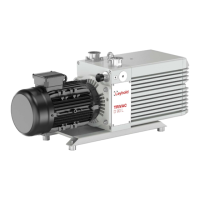
